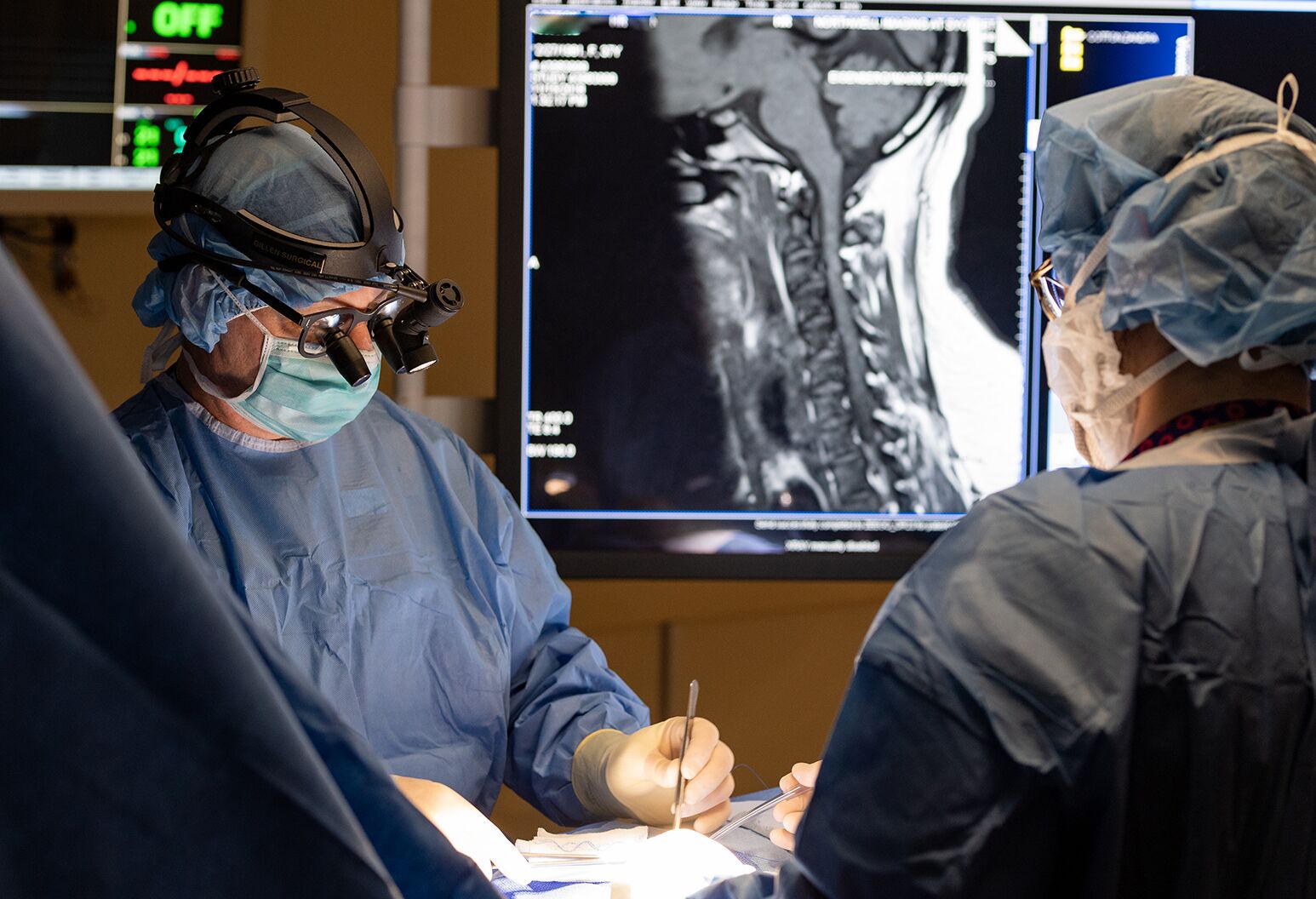The Current Advancements by the Best Spine Surgeons in St Louis MO
Wiki Article
An Overview of Spinal Column Problems That Frequently Lead To Surgical Treatments
Spine conditions such as herniated discs, back stenosis, and degenerative disc illness frequently necessitate medical interventions when conventional treatments fail to reduce persistent signs and symptoms. Understanding the subtleties of each condition and the equivalent medical alternatives, such as discectomy or back blend, is vital for efficient administration.Herniated Discs
Although numerous individuals with herniated discs might discover alleviation via traditional treatments, surgical procedure ends up being a necessary consideration when signs aggravate or persist - best spine surgeons in st louis mo. A herniated disc occurs when the soft inner gel of a spine disc protrudes through its external layer, potentially leading and compressing nearby nerves to discomfort, pins and needles, or weak point in the extremitiesConventional administration commonly includes physical treatment, discomfort medications, and corticosteroid shots, which aim to decrease swelling and improve feature. However, in cases where these methods stop working to minimize debilitating signs and symptoms, medical choices might be discovered.
The most common surgical treatment for herniated discs is a discectomy, which involves the elimination of the herniated section of the disc to alleviate stress on the influenced nerve root. In a lot more extreme instances, back fusion may be essential to stabilize the affected vertebrae.
Clients are advised to review the potential risks and benefits of surgical treatment with their doctor to make a notified decision. Ultimately, the goal of any surgical intervention is to restore function, reduce pain, and enhance total lifestyle for people experiencing herniated discs.
Back Constriction
Spine stenosis occurs when the areas within the spinal column narrow, resulting in enhanced pressure on the spinal cord and nerves. This problem can create in different regions of the spine, including the cervical and back areas, frequently due to age-related changes, such as degenerative disc disease, joint inflammation, or thickening of ligaments.People with back stenosis may present with symptoms that consist of discomfort, tingling, tingling, or weak point, largely in the arms or legs. These signs can be intensified by activities that include standing or walking, frequently leading people to look for relief with conventional treatments like physical treatment, medicines, or epidural steroid injections.
Nonetheless, when these non-surgical treatments fail to provide ample alleviation, medical choices might be taken into consideration. Common procedures for spine stenosis include laminectomy, which involves the removal of component of the vertebra to alleviate stress, and spinal fusion, which stabilizes the damaged location. The choice to go after surgery is usually based upon the intensity of symptoms, the level of functional impairment, and the total health of the person. Motivate medical diagnosis and administration are essential to avoid additional neurological compromise and improve lifestyle.
Spondylolisthesis
Spondylolisthesis happens when one vertebra slides forward over an additional, resulting in imbalance of the spine. This condition can result from different elements, including genetic flaws, trauma, or degenerative changes in the back. It is most typically observed in the lumbar region, specifically at the L4-L5 and L5-S1 levels.
When non-surgical approaches stop working to alleviate symptoms or when significant nerve compression is present, surgical treatment may be required. Surgical choices can include back blend or decompression Get More Information treatments, aimed at restoring alignment and minimizing neurological signs and symptoms.
Degenerative Disc Disease

People with DDD frequently experience pain that might emit to the legs or arms, depending on the affected region of the spinal column. The condition can be identified via a mix of professional analysis, imaging research studies, and patient history. Therapy choices commonly start with traditional steps, including physical therapy, pain management, and lifestyle adjustments. Nonetheless, when these approaches fail to provide adequate relief, medical treatments may be thought about.
Surgical alternatives for DDD may consist of spine fusion or synthetic disc substitute, aimed at maintaining the impacted sector and relieving discomfort (best spine surgeons in st louis mo). Ultimately, the option of treatment is individualized, considering the severity of the problem, patient health and wellness, and lifestyle aspects
Spinal Lumps

What variables add to the advancement of lumps within the spine, and just how do they materialize in individuals? Back tumors can emerge from various factors, consisting of genetic tendency, ecological influences, and pre-existing clinical problems. They can be categorized as key lumps, originating in the back, or second growths, which spread out check my site from various other regions of the body. Patients may provide with a variety of signs, including local pain, neurological shortages, weak point, or changes in bowel and bladder function, depending upon the growth's size and area.
Surgical treatment might be required to relieve signs, acquire a biopsy, or remove the lump completely. The objective of surgical procedure is often to unwind neural elements and support the spine. Early detection and treatment are critical for enhancing end results in patients with spine tumors.
Conclusion
In summary, spinal column problems such as herniated discs, spinal constriction, spondylolisthesis, degenerative disc illness, and back growths regularly require surgical treatment due to their potential to cause considerable discomfort and functional impairment. While conservative treatments may supply momentary relief, medical alternatives come to be important when symptoms get worse or continue. Prompt diagnosis and treatment play a crucial role in bring back function and boosting the lifestyle for damaged people, underscoring the significance of comprehensive spine care.
Report this wiki page